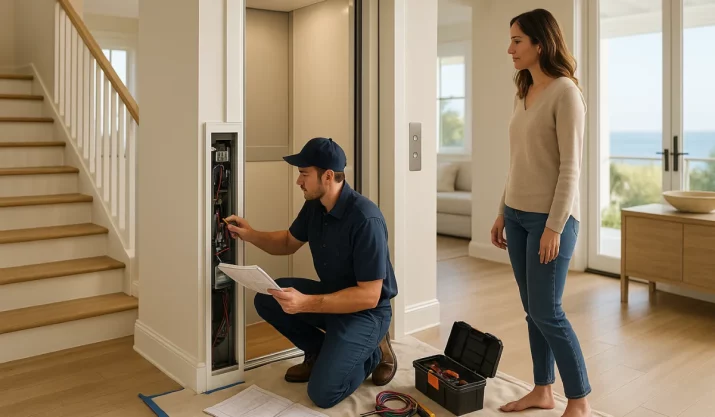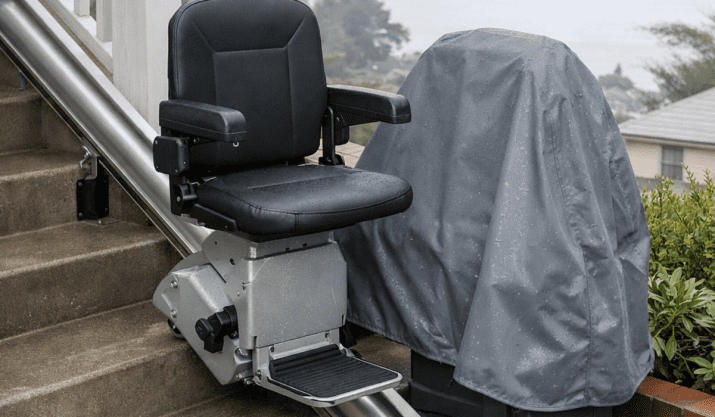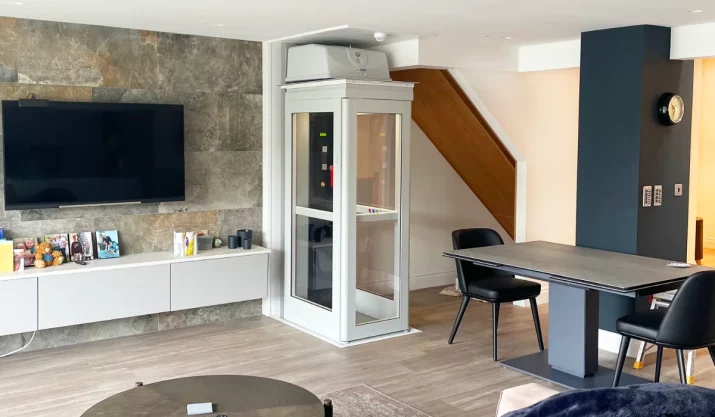Home Elevators vs. Stair Lifts: What’s Best for You?
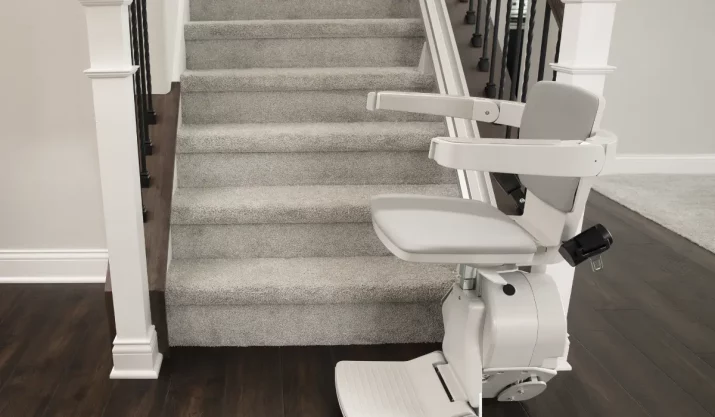
Table of Contents
The number of people aged 65 and over is projected to grow significantly in the coming decades, increasing the demand for mobility solutions like home elevators and stair lifts.
Deciding between the two is crucial for homeowners who seek to enhance mobility in their residences. How will the user’s mobility needs influence the choice between a stair lift and a home elevator?
Stay with us as we explore the benefits and limitations of each option to help guide your decision.
Key Takeaways
- Home elevators offer improved mobility within your home, especially for individuals with disabilities, with various types requiring different amounts of space and construction modifications.
- Installing a home elevator involves consultation, planning, permit acquisition, preparation, installation, and inspection, usually causing some home disruption.
- Stair lifts, tailored for different staircase designs, enhance independence with features like remote control, swivel seats, adjustable footrests, and safety sensors.
- When comparing home elevators to stair lifts, consider cost, space requirements, installation complexity, design compatibility, and how each option meets mobility needs.
- Both home elevators and stair lifts improve accessibility but differ in their installation impact, space requirements, maintenance, longevity, and safety features, making professional consultation crucial for the right choice.
Understanding Home Elevators
Like platform lifts, home elevators are vertical lift systems designed for residential use.
They allow you or your loved ones with disabilities to move quickly between different levels of your home.
Home Elevator Considerations
Understanding the space and construction requirements is crucial when weighing your options for installing an elevator in your home.
Here’s what you need to consider:
| Aspect | Description |
| Typical Dimensions | The required space can vary depending on the type of elevator. A traditional home elevator with a shaft may need a footprint of up to 5 feet square. |
| Elevator Shaft | For some models, like the traditional residential elevator, constructing a shaft requires significant home modification. |
| Shaftless Options | Shaftless home lifts like pneumatic elevators can be a space-saving alternative, requiring less structural alteration. |
| Door Swing | Ensure adequate room for door opening, especially for elevators with a swing door design. |
Installation Process
Embarking on installing a home elevator involves several key steps, each critical to ensuring a seamless and efficient process.
Here’s what you can expect from start to finish:
- Consultation and Planning: A typical installation starts with a professional assessment of the home to customize the elevator fit.
- Permit Acquisition: Obtaining the necessary building permits can take several weeks and varies by location.
- Preparation: This phase includes creating openings for the shaft or the machine, which can take a few days.
- Installation: The assembly and installation of the elevator system usually take a week or two.
- Inspection and Testing: After installation, local authorities may need to inspect and approve the elevator before it’s cleared for use.
- Potential Disruptions: You should anticipate some form of disruption during this time, as areas of the house might be inaccessible during the installation stages.
Understanding Stair Lifts
Stair lifts are motorized chair systems that allow you to move up and down stairs safely and comfortably.
They are typically installed directly onto the stairs and cater to different staircase types. It enhances mobility and independence for your loved ones.
Different Types of Stair Lifts
Choosing the right stair lift depends on the unique design of your staircase. Here’s a breakdown to help you match your needs with the ideal option:
| Type of Stair Lift | Details |
| Straight Stair Lifts | Most suitable for staircases without bends or landings. Tailored to run in a straight line. |
| Curved Stair Lifts | Custom-built for stairs with turns, landings, or spirals. Require professional measurement for a perfect fit. |
| Outdoor Stair Lifts | Designed to withstand weather conditions for exterior steps. |
Stair lifts must be professionally measured and installed to ensure they match the specific dimensions and shape of the staircase.
Home Elevators vs. Stair Lifts
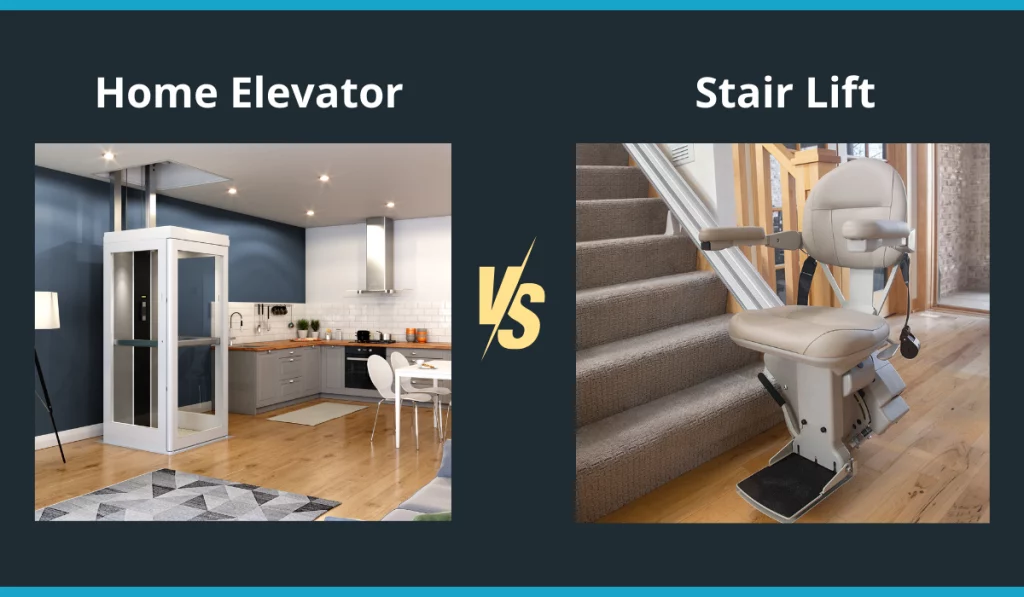
When it comes to investing in a home elevator or stair lift, you must consider multiple factors when choosing an accessibility solution.
Considerations to arrive at your best solution include cost implications, space utilization, design compatibility, and functionalities tailored to mobility needs.
Cost and Investment
As you weigh the financial aspects of adding a home elevator versus installing a stair lift, consider how each option aligns with your budget and investment goals.
Here’s a breakdown to guide your decision:
| Factor | Home Elevator | Stair Lift |
| Initial Cost | Higher upfront investment | More budget-friendly upfront cost |
| Potential Value Increase | Can boost property value significantly | Usually, it has a lesser impact on property value |
| Long-Term Investment | Higher maintenance costs, but adds luxury | Cost-effective solution with lower maintenance costs |
| Resale Value | Can be appealing to specific buyers | May need to be removed if not valued by the next homeowner |
Design and Customization
Take note of how both home elevators and stairlifts offer extensive design and customization possibilities to blend with your style and home’s aesthetics seamlessly:
Home Elevators
These accessibility solutions offer a variety of design options, including:
- Luxury materials such as glass or custom woods
- Customizable size and shape to fit the home’s design
Stairlifts
Stair lift installed in your home’s stairways may also provide multiple design choices:
- Various seat fabrics and colors
- Different rail colors to complement home décor
Requirements and Installation
To make an informed choice between a home elevator and a stair lift, understanding the space each requires and the installation process involved is crucial.
Here’s a comparative overview to guide you:
| Aspect | Home Elevator | Stair Lift |
| Required Space | Needs more space for the shaft and machine room | Requires minimal space, installed on stairs |
| Installation Process | Involves extensive construction, more laborious | Relatively simple to install, often in a day |
| Home Modification | Major alterations to the home structure may be needed | Minimal home modifications needed |
| Implications | May affect the home’s structure and layout | Can be easily removed with no permanent impact |
Maintenance
When considering their upkeep and durability, it’s crucial to weigh the differences between home elevators and stair lifts.
Here’s a quick overview to help you understand what to expect in terms of maintenance, longevity, and warranty for each option:
| Aspect | Home Elevator | Stair Lift |
| Maintenance | Regular service by a professional needed | Simple checks and basic cleaning suffices |
| Expected Lifespan | Decades with proper maintenance | Approximately 10 years |
| Warranty Period | Often longer, varies by manufacturer | Typically shorter than home elevators |
Safety and Reliability
Both typically come with warranties and meet industry safety standards. However, the two offer different safety features besides optimal weight capacity, including:
Home Elevator
- Emergency phone
- Automatic descent during power outage
Stair Lift
- Seatbelts and safety sensors
- DC-powered motors to operate even in a power loss
Professional Consultation and Installation
Before making a decision, it’s wise to seek expert guidance from a provider like us, here at California Mobility.
To learn a bit more about home elevators and stairlifts, give us a call at (866)-839-6187 to learn a bit more about your options and which one might be best for you.




